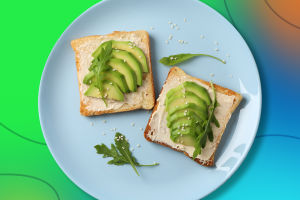Greek cuisine covers a variety of fresh ingredients, including vegetables, beans, nuts, yogurt, cheese, grains, fish, seafood and small amounts of meat.
The dining time of Greeks is different from that of most European countries. For example, many Greeks may skip breakfast and prefer to drink one or two cups of coffee and some snacks in the morning.
Around 2 p.m., they will have some form of lunch. Their dinner time is usually very late, such as going out with friends after 9 pm. In the summer, they may even not go to dinner until around 11:00 pm.
Greek yogurt is the best and tastes different from ordinary yogurt.
To make a cup of ordinary yogurt, you only need to use about one cup of milk, and whey (liquid like water in it), twice. But to make a cup of Greek yogurt, it takes about four cups of milk, and whey, every three times.
Thus it can be seen that Greek yogurt is equivalent to the process of sieving moisture and whey once more than ordinary yogurt.
The difference in production technology also makes the final difference in taste and nutritional value.
1. Greek yogurt taste: more concentrated than ordinary yogurt, so the viscosity and taste are more slippery, and the texture is thicker and "strong".
2. Source of milk: qualified high-quality Greek yogurt milk comes from grass-fed cows, while most of the cows selected by ordinary yogurt come from genetically modified (GMO) products to produce genetically modified milk.
3. Nutritional value: only 4 liters of milk produces 1 liter of Greek yogurt, so the protein content is twice that of ordinary, so it can bring a high sense of satiety, lactose is also less than half of the normal, so it is certainly more expensive.
4. Calcium: Greek yogurt is three times higher and is a good source of calcium absorption.
5. Sodium: the content of Greek yogurt is less than half, reducing edema.
6. In terms of calories: people who pay attention to their weight may be more concerned about the difference in calories, but Greek yogurt has more saturated fat than regular yogurt, so the two have the same calories, but there is a big difference in nutrition.
Most yogurt is sweet, but Greek yogurt has a salty taste. For example, cacik adds mint, dill, shredded cucumber, parsley, salt, pepper, olive oil and lemon juice to Greek yogurt, which is easy to make and indispensable to Greek food.
The Greeks love yogurt, and the Turks also like to sprinkle some pepper and chilli powder on the yogurt soup, and when eating dumplings, they will put boiled dumplings and sprinkle the yogurt with hot oil boiled with chilli grains.
In the appetizer, Cacik, Hummus, Babaganoush, Tabbouleh and so on will be put together and served on a large platter. All the appetizers are served with bread and bread.


